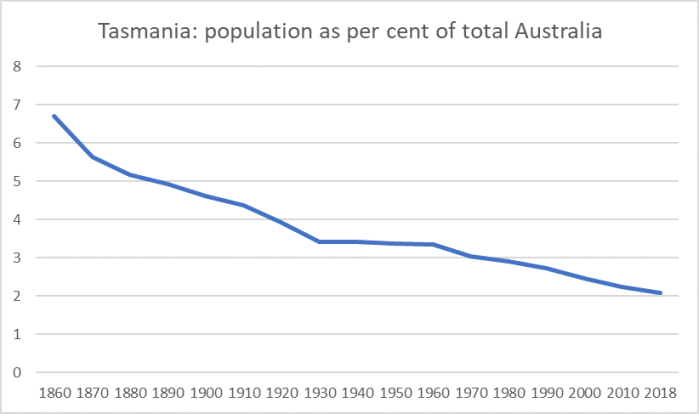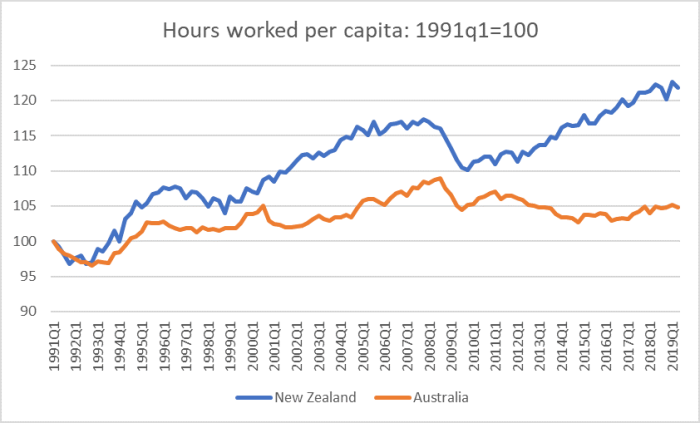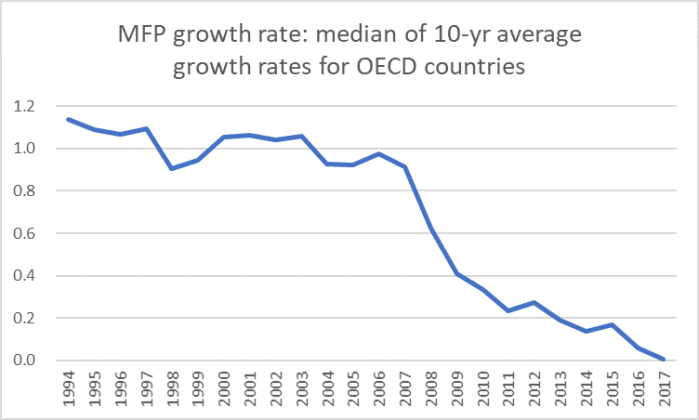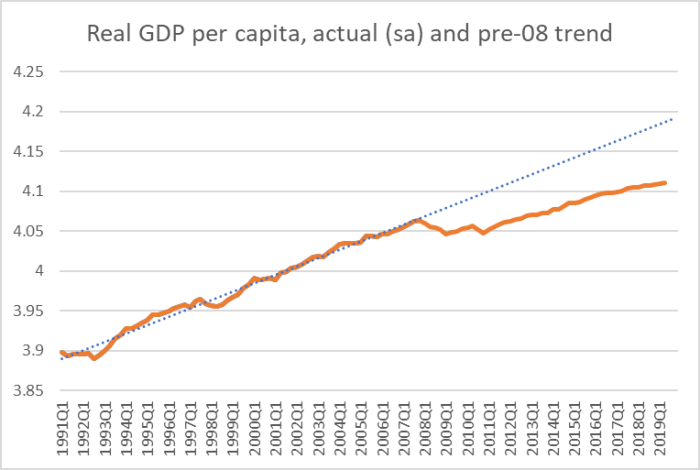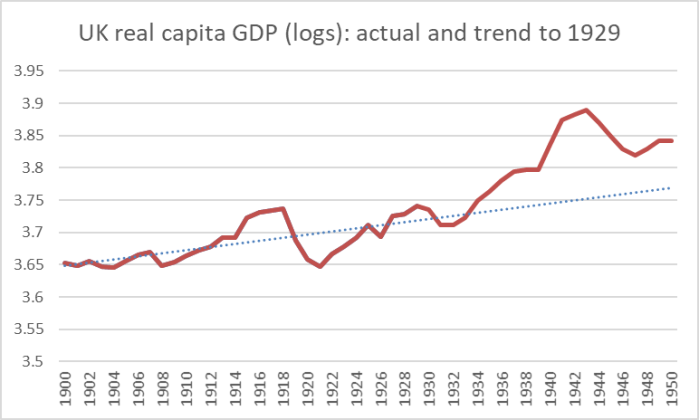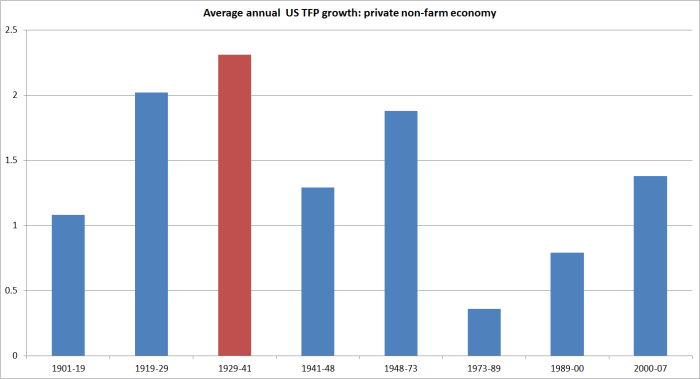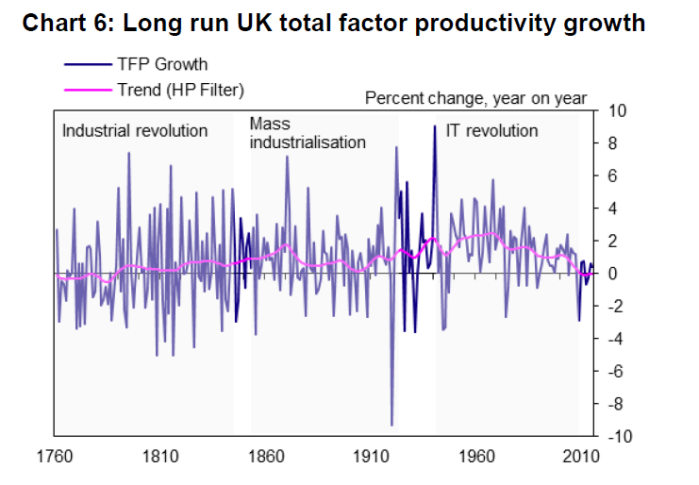The Reserve Bank’s Assistant Governor for monetary policy and financial markets, Christian Hawkesby, went off to Sydney earlier this week to talk to some investors about New Zealand monetary policy communications. Hawkesby now has tenure and independence – at least in principle – as a statutory officeholder, a member of the Monetary Policy Committee, appointed directly by the Minister of Finance.
It was perhaps telling that (a) the speech was delivered on a New Zealand public holiday, (b) the text wasn’t released for another 24 hours, and (c) we have no record of what Hawkesby actually said, including in response to questions. That is no way to do monetary policy communications.
Perhaps while he was in Sydney Hawkesby dropped in on his peers at the Reserve Bank of Australia. The RBA has about 45 speeches/presentations from senior managers showing on its Speeches page for 2019. For all but three of them – and none of those three on topics that appear market-sensitive – there is video, audio or a Hansard transcript (several of the Governor’s appearances were to parliamentary committees). It doesn’t seem to make any difference to the RBA whether the speeches etc are given overseas, out in the provinces in Australia, or in downtown Sydney or Melbourne: the standard they set for themselves is that when they say something, it is made generally available. Anything else poses a risk – actual or in appearances – of unequal access to potentially market-moving, or just insightful, official information and perspectives. That is just one aspect of communications on which the Reserve Bank of New Zealand falls a long way short of best practice. There are 12 speeches from senior managers on the Reserve Bank of New Zealand’s Speeches page for 2019, and for only of them is there video footage (that a puff piece by the Governor – which I wrote about here).
Hawkesby’s speech came in two parts. The first was devoted to repeating longstanding Reserve Bank spin about how transparent it is, supplemented by some Orr-esque lines about how surprising the market is no bad thing (the second part was defensive play around the surprise August 50 bps OCR cut). There were no fresh insights or arguments, which in itself was a bit disappointing from so senior a figure, relatively newly returned to the Bank – despite the relatively junior-sounding title, Hawkesby is, in effect (and in Wellington public service lingo) a deputy chief executive responsible for half the Bank’s core functions. Anywhere else in the world he’d carry a Deputy Governor title. Those are the standards his speeches should be held to.
The Reserve Bank (longstanding) main claim to being highly transparent is that it publishes a future track for the policy interest rate (the OCR) for a period two to three years ahead. We were the first central bank to do so, in 1997. As Hawkesby notes, despite 22 years experience, only a handful of other central banks (four small advanced country ones) have followed our lead. Reasonable people can debate whether publishing a forward interest rate track is the best way to do things (I’ve never been convinced myself) but when none of the world’s leading central banks have taken that path – and all will, quite seriously, proclaim a commitment to transparency – it probably isn’t something to put quite as much weight on as the Bank has done (through successive Governors/staff).
I’ve characterised the publication of the forward interest rate track as being highly transparent about something the Bank (now, at least formally, the MPC) knows almost nothing about. Economic forecasting is a mug’s game, and there is little evidence that anyone can usefully forecast economic developments more than perhaps a quarter or two ahead….and yet, monetary policy works with a lag, so a medium-term OCR projections (for, say, 2.5 years ahead) implicitly requires – to be meaningful – some intelligent view of inflation prospects perhaps four years hence. No one can do it in a way that has any useful substantive information.
And if the Reserve Bank is pretty transparent about the stuff it knows almost nothing about – and has to divert scarce resources to generating such tracks – it is really quite strikingly non-transparent about the stuff it does know more about. For example:
- we have a Governor, clearly the most important player in the system, who has not yet given a particularly substantive speech on monetary policy, the economy, and inflation (which would otherwise offer insights on his thought processes, his mental models, his ability to process and analyse data etc),
- we have a Chief Economist – also a statutory appointee as member of the Monetary Policy Committee – who has not given a speech or said a substantive word in public since he was appointed,
- as above, the Bank isn’t particularly transparent around the speeches it does give (and especially around answers to questions),
- we have three non-executive members of the Monetary Policy Committee from whom not a word has been heard since they were appointed. We know nothing about how any of them think about the policy targets towards which they are working, about how economic developments are unfolding, or about the “reaction functions” they use (and this is so even though the rules allow them to speak), and
- the Bank is totally untransparent about the background analysis produced to support monetary policy decisionmaking. The current government – not naturally particularly transparent – has adopted a practice of pro-active release of Cabinet papers, many Budget-related papers have long been pro-actively released, but ask for any background papers re monetary policy decisions – even with quite a lag – and the Bank will simply refuse (and, sadly, they have the ineffectual Ombudsmen – over several appointees – wrapped around their little finger in clasping this taxpayer-funded analysis tightly to their chest). Perhaps it is lawful, but it simply isn’t transparent. (A few years ago, after many months of trying, I managed to get them to release background papers for an MPS from 10 years previously – but no one supposes they would release such material from, say, two years ago. If there is a decent argument for any confidentiality around this material, it could only credibly mounted for the period from one MPS to the next – ie three months or so – at most.)
That isn’t good monetary policy transparency, nor is good open government (the latter not being a consideration that ever weighed much with the Bank).
Hawkesby attempts a defence of the Bank’s preferred practice, in which only the Governor speaks about monetary policy (no speeches of course, just MPS press conferences) and to the extent that underlings like Hawkesby speech they largely parrot the Governor. This is the best he can manage
A third limitation of transparency is the noise that it can create – an example of this is how to capture the diversity of views of individual members of a committee tasked with setting interest rates.
An example of this is how to capture the diversity of views of individual members of a committee that sets interest rates. Each individual member regularly sharing their views on the economic and policy outlook can make it harder for financial markets to interpret the reaction function of the collective group. While I worked at the Bank of England, I always remember the head of communications bemoaning the cacophony of voices. More transparency around the perspectives of individual members could also create incentives for those individuals to hold on to a previously published position even as new information emerges, for fear of being seen as ‘conceding’ their position.
A paradox of these limitations is that greater transparency does not necessarily equate to increased clarity for market participants and the general public. Just because more information is available does not necessarily mean the audience will have a greater understanding of how and why central banks make decisions.
But there isn’t much there. Of course Communications managers are keen on message discipline – always have been, always will be – and at the Bank of England management was long not very keen on the independence of the external MPC members anyway. But isn’t it striking that whereas the Reserve Bank seems to believe that New Zealanders – public, markets – can’t cope with a diversity of views (about a highly uncertain business), the national central banks for the largest advanced economies – the US, Japan, and the UK – in fact do cope quite well with having MPC members explicitly voting against a majority view, or articulating a model or analytical insights a bit different from that of others on the relevant committee. Sweden is a succesful small country example. The ECB is a bit different – and there are some reasons why, around minimising pressure on members to act for their own country’s national interests – but even in the ECB there is plenty of open recognition of differences of view among the monetary policy decisionmakers. It isn’t as if central bankers know from year to year – often not from quarter to quarter – what they are going to do: events happen, interpretations evolve, and particular hypotheses are openly challenged and scrutinised (including those of monetary policy decisionmakers, when we are allowed to see them).
So, no, the Reserve Bank of New Zealand really isn’t particularly transparent at all. And the newly published minutes really represent not much of a step forward at all.
One of Hawkesby’s points is that the Bank is keen to learn from outsiders – yes, even “bloggers”.
When private sector economists, analysts, commentators or bloggers don’t agree with our policy decisions or our projections for the economy, it can be an uncomfortable message to hear. But it is an invaluable exercise to test our assumptions and reasoning, even if we don’t agree with their conclusions, we inevitably learn something along the way and strengthen our analysis of the issues.
Good to know (although it is a bit to take seriously when we see how the Governor responds to challenge, criticism, or alternative perspectives on another of those highly complex and uncertain issues – appropriate bank capital requirements).
But this line is really used to buttress a rather silly line the Governor has run on a few occasions about the (alleged) dangers of the markets paying too much attention to trying to guess what the Bank is up to, in turn (allegedly) reducing the information the Bank itself can get from market prices. This is, we are told, one reason why it is just fine for the Bank to do things that take markets totally by surprise (notably, the 50 basis point OCR cut in August).
It really is a nonsense argument, even if he can find a couple of footnotes to attempt to buttress his case. In fact (and in effect) he more or less concedes later in the speech when he highlights things like falling medium to long-term inflation expectations (including from the indexed bond market – a welcome Hawkesby innovation to have the Bank even acknowledge the indicator) that were concerning the MPC when they made their decision. Almost certainly those indicators – eg from 10 year bonds – would have been just as they were whether markets thought the Bank was going to cut 50 bps in one go, surprising almost everyone, or (say) spread the cuts over two 25 bps cuts.
I’m not one of those who think that monetary policy decisionmakers should always deliver on market expectations. But usually if market expectations are very wrong (not – eg – just 10 expected a cut, 12 expected no change) it is the fault of the monetary policy decisionmakers themselves. In those circumstances, they add noise and volatility that is simply unnecessary and has no redeeming societal merit.
And as I noted at the time of the August MPS, the 50 point cut looked a lot like a rather rushed last minute decision, that wasn’t really supported by other the numbers (they themselves produced) or the MPS text.
And what makes it a bit more concerning is that it is pretty clear the Bank itself wasn’t intending to move by 50 basis points even a few days ago. The projections they published yesterday were finalised on 1 August (last Thursday). On those numbers, the projections for the OCR (quarterly average) were:
September quarter 2019 1.4 per cent
December quarter 2019 1.2 per cent
March quarter 2020 1.1 per cent
With the next OCR review in late September and the following one in md-November, those projections – adopted by the whole MPC – clearly envisaged not getting to a 1 per cent OCR even by the end of the year.
The bulk of the Monetary Policy Statement itself is written in the same relatively relaxed style, with no hint of a change in policy approach, and thus no proper articulation of the reason for it, or (hence) for how we should think about how the Committee will react, in principle, at future OCR reviews. The Bank has added to uncertainty around policy, not reduced it. In a similar vein, there is a new two page Box A in the statement on “monetary policy strategy”, intended to run each quarter, which is so general as to add nothing to the state of understanding of what the MPC and the Bank are up to.
And you will look in vain for any real insight from the minutes of the MPC meeting. We are told
The members debated the relative benefits of reducing the OCR by 25 basis points and communicating an easing bias, versus reducing the OCR by 50 basis points now. The Committee noted both options were consistent with the forward path in the projections. [a claim that demonstrably isn’t true – see above] The Committee reached a consensus to cut the OCR by 50 basis points to 1.0 percent. They agreed that the larger initial monetary stimulus would best ensure the Committee continues to meet its inflation and employment objectives.
But nothing about the considerations Committee members took into account in belatedly lurching to a 50 point OCR cut, or how they think about the conventions and signalling around using 25 point moves vs 50 point moves (when things aren’t falling apart here – and it was the Governor yesterday who announced, oddly, of New Zealand that “the country is in a great condition”).
That wasn’t good or effective monetary policy communications. It wasn’t a transparent insight on how the Committee is operating, the sort of reaction functions members are using, their view of MPS reviews vs the other OCR reviews. It was – or came across as – a lurch (even if, like me, you thought that the OCR needed to come down quite a bit, quite quickly).
I’m going to end with two more examples of a lack of serious transparency. Near the end of his speech Hawkesby observes
There are plenty of communication challenges ahead, especially if monetary policy in New Zealand moves into a less conventional territory, and we end up adopting new tools and approaches.
These will need to be explained clearly to both financial markets and the people of New Zealand.
No doubt, but would be an open and transparent central bank, wanting to build and maintain confidence in (a) its potential instruments, and (b) its actual decisionmakers and their advisers want to be much more open than the Reserve Bank has actually been? Wouldn’t discussion documents outlining potential issues and options be a good idea? Wouldn’t seminars and workshops with outside experts and market participants be a good idea? Apart from anything else, at least in principle (as the Assistant Governor said) the Bank learns something from such engagement, challenge, and critique and in the process improves its own understanding and analysis. It isn’t as if anyone is suggesting they pre-commit to when particularly instruments might be used, so this stuff shouldn’t really be market-sensitive, but it is quite important, potentially to us all (and was we know the Bank’s own research capability has been gutted this year). And it isn’t as if the Bank’s background analysis on other matters – bank capital again – should fill us with confidence and willingness to simply “trust us, we know what we are doing”.
And on a smaller note, the next Monetary Policy Statement and OCR decision is on 13 November. As the Assistant Governor highlighted, inflation expectations are quite a significant influence in Bank thinking at present (rightly or otherwise). And yet the main inflation expectations series – the two year ahead measure in the Bank’s own survey – isn’t scheduled for release until 12 November. I participate in that survey. Responses were due by midday last Tuesday (22nd). It is an electronic survey and if the results are not already in the Bank’s hands, they assuredly could be (it is pretty simple survey with fewer than 100 respondents, taking a matter of hours to compile at most). And yet the Bank is sitting on this information until the very last minute. By the time we get it, their decision will have been all-but-finally made, their MPS document completely written. If they were really serious about the desire to listen and learn, from markets, commentators, nay even “bloggers”, they’d have made sure the information was compiled and published quickly, allowing the Bank itself to listen to the response of outsiders in processing the significance of such important (to them) economic data.
If they were really serious…..instead, they mostly seem interested in fending off critics and keeping to themselves the stuff they know, while distracting us with their transparency about the stuff they don’t know much about at all (and where most central banks have not thought it advisable to follow the New Zealand lead).



